India’s monsoon season runs from June to September. It brings needed rain but also problems like floods, diseases from dirty water, power cuts, and travel delays. The Weather Department says this time we will have more rain than usual. Good planning ahead of time can keep your home, health, and work safe.
Weather Forecasts and Alerts During Monsoon
The first step in monsoon preparation is knowing about upcoming weather events. Checking weather forecasts during the monsoon season is about more than knowing if it will rain tomorrow.
Weather monitoring helps with life safety by avoiding lightning strikes, floods, and landslides.
It protects health by preventing water-borne and mosquito-borne diseases that spread during monsoons.
It provides economic security by protecting crops, livestock, transportation, and businesses.
Proper forecasts enable disaster readiness through timely evacuation and relief efforts.
Finally, it builds community resilience by helping people support neighbours, elderly residents, and children during emergencies.
That’s why India’s weather department (IMD) and disaster management agency (NDMA) strongly recommend checking forecasts regularly during the monsoon season.
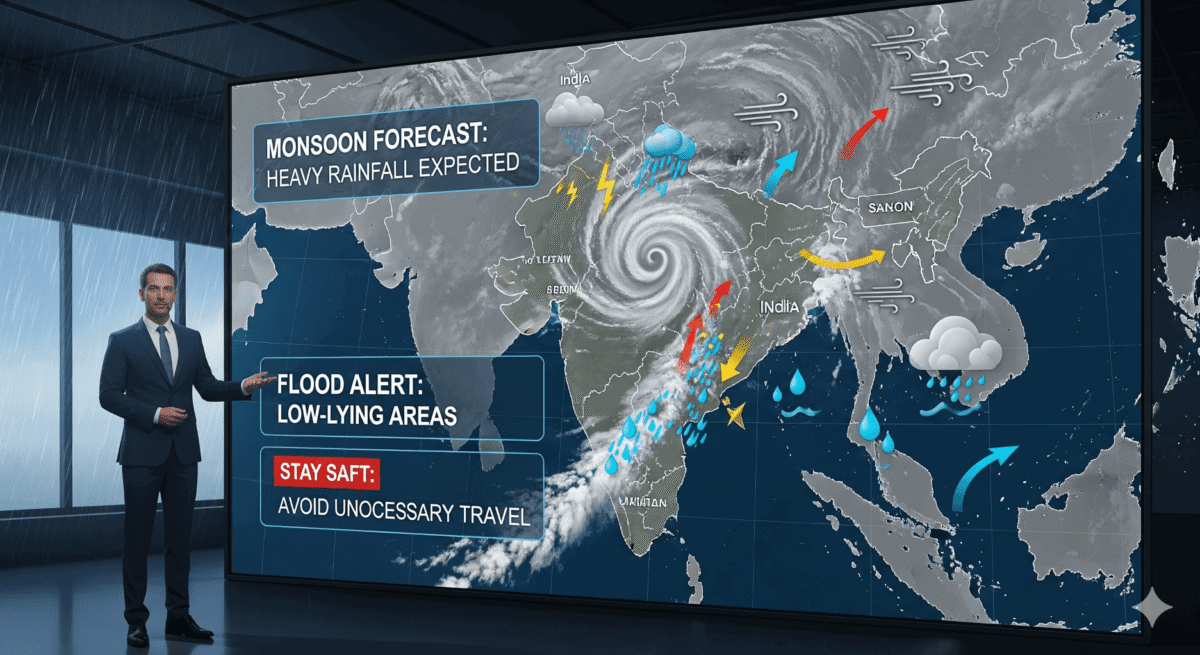
Government Resources and Apps
NDMA Guidelines: The National Disaster Management Authority provides official safety protocols at www.ndma.gov.in, covering flood planning, emergency lighting, first-aid preparation, and safety drills.
SACHET Portal: The Government of India’s SACHET portal sends real-time disaster alerts based on your location. The mobile app is available on Google Play Store and Apple App Store, providing alerts in 12 Indian languages via SMS, mobile apps, and RSS feeds.
Damini Lightning App: Developed by the Indian Institute of Tropical Meteorology, this free app warns about lightning strikes near your location. It’s especially useful for outdoor workers, farmers, and people in storm-prone areas.
MAUSAM App: The official IMD app provides current weather, forecasts, radar maps, and alerts for storms and heatwaves. As a government app, it offers trusted and accurate forecasts.
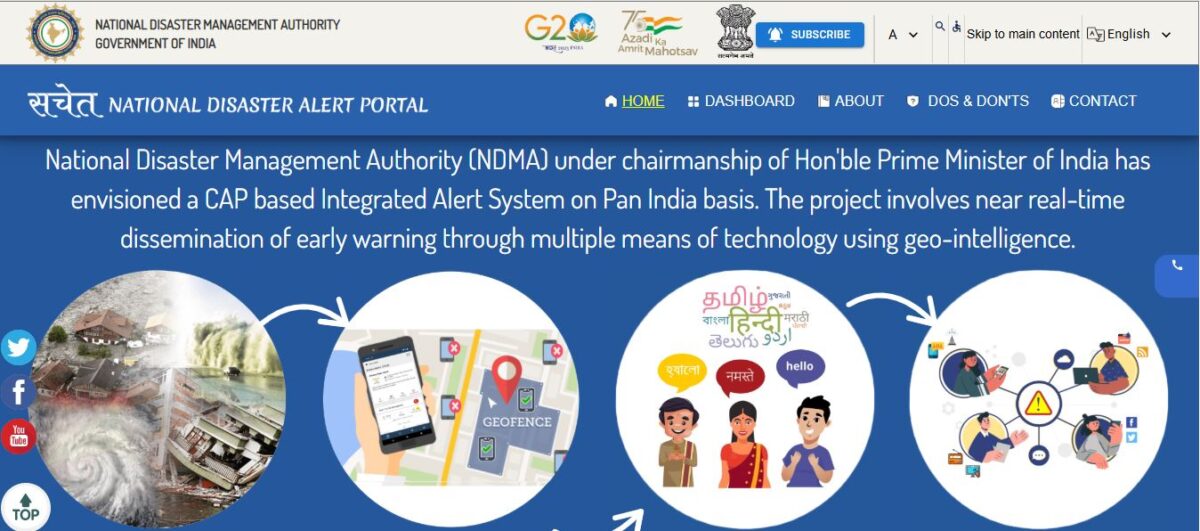
Popular Weather Apps
Skymet Weather: India’s largest private weather company (since 2003), popular with farmers and rural users. It offers detailed forecasts, satellite images, monsoon tracking, and supports 9-10 Indian languages.
Windy.com: Recently popular in India for its attractive, interactive weather maps showing wind, rain, and pressure patterns. Users appreciate its simple design and clear cyclone forecasts.
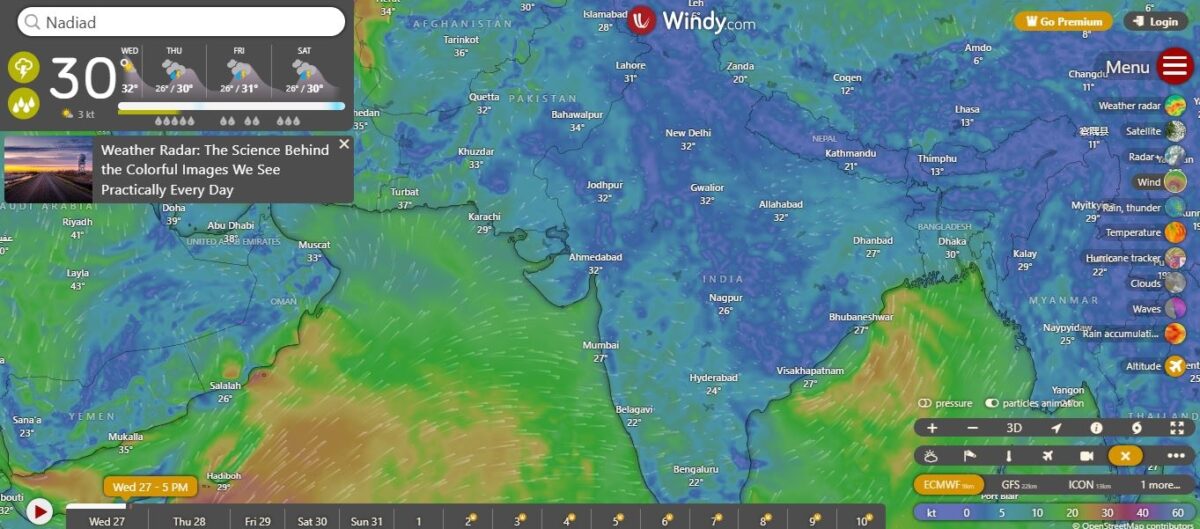
Built-in Options: Every smartphone has a built-in weather app. Google Search also displays weather information and sends notifications.
Prepare Your Home for Monsoon
Protect Your Belongings
Keep valuable items and electronics on higher shelves in case water enters your house. Put moisture absorbers like silica gel packets or cloves in cupboards and wardrobes, especially in humid states like Kerala or Maharashtra. This prevents clothes from getting damp and smelly.
Have backup power ready, like an inverter, UPS, or power bank, since power cuts are common during monsoons. These steps keep your belongings safe and your family comfortable when the lights go out.
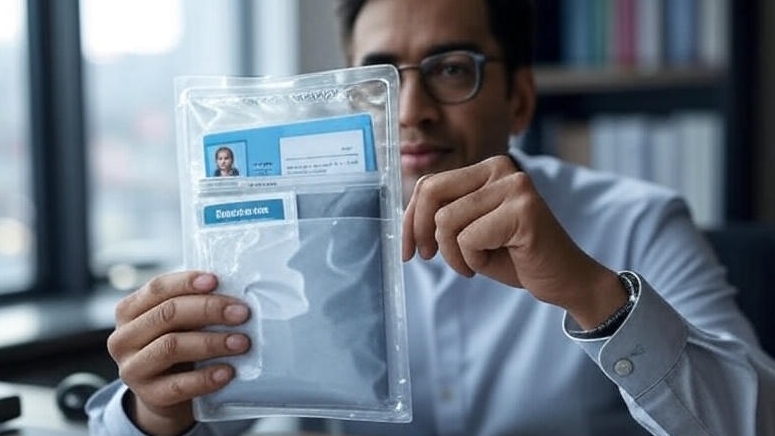
Fix Your Roof and Walls
Check your roof and terrace regularly for damage. Look for broken, cracked, or missing tiles, and check for holes or cracks anywhere on your roof. Even tiny holes can let rainwater into your house, causing serious problems.
Water damages the wooden parts of your home, creates fungus that makes your family sick, and can make your ceiling collapse. Repairing this damage costs thousands of rupees, so fix small problems now before they become expensive disasters.
Apply waterproofing materials to seal walls, windows, and doors. Use waterproof paint, sealants, or putty from any hardware shop. If you live in heavy-rain areas like Assam, Meghalaya, or the Konkan coast, use special exterior waterproof paint. It costs more than regular paint but provides much better protection.
Clear Drainage Systems
Clean all drains inside and outside your house to prevent water buildup. Cut tree branches that might fall and block drains during storms. Cities like Mumbai, Chennai, and Guwahati flood easily during monsoons because their drainage systems get blocked.
Clear your drains before the monsoon starts so rainwater flows away properly and prevents waterlogging in your area.
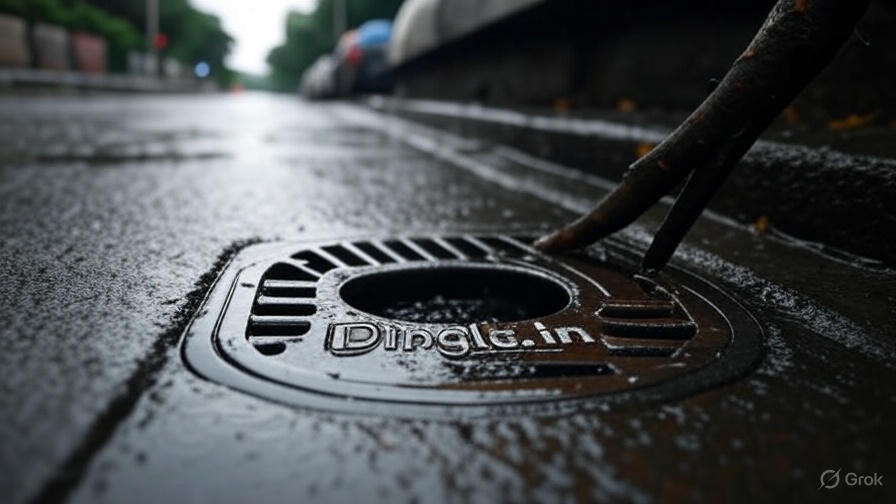
Check Electrical Safety
Get a licensed electrician to inspect all outdoor electrical wiring before the monsoon. Use surge protectors for electrical items. Keep appliances like TVs, refrigerators, and washing machines on higher platforms if you live in flood-prone areas like Bihar or Assam.
During thunderstorms, unplug sensitive electronics like computers and mobile chargers. This protects them from power surges that can damage or destroy your appliances. It’s better to be safe than spend thousands on repairs or replacements.
Essential Items or Equipment Checklist
Raincoats (Lightweight and Quick-Dry)
Carry a lightweight raincoat during the monsoon season. It is ideal for India’s sudden downpours that can begin without warning. Raincoats are reusable and convenient, whether you live in a big city like Mumbai or Delhi, or in smaller towns and villages.
Choose one that dries quickly so it can be used repeatedly. A raincoat is often more reliable than an umbrella in strong winds and storms, and it can be easily carried in your bag or while riding a two-wheeler.
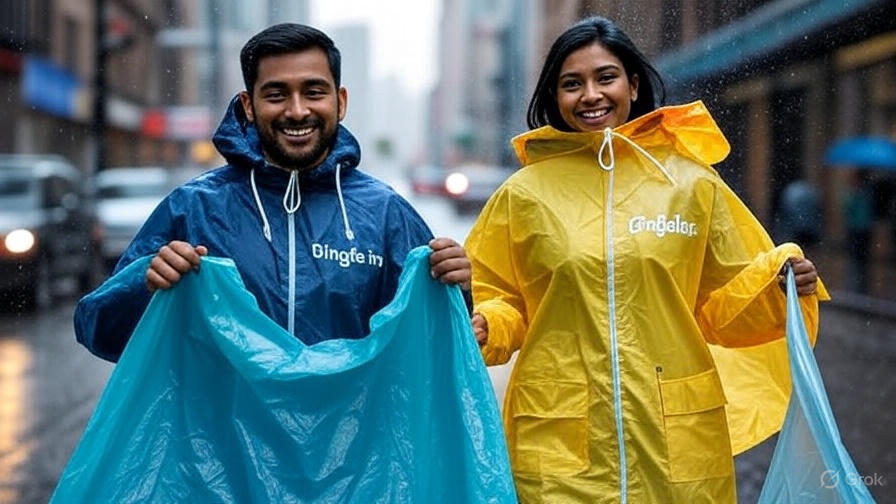
Umbrella / Foldable Rain Cap
Keep an umbrella or foldable rain cap as extra protection during heavy downpours.
When the rain gets too heavy, you can use it along with your raincoat for double protection. Foldable ones are very handy – you can easily keep them in your office bag or two-wheeler dickey. They’re especially useful when you’re getting down from a bus or an auto and need to walk some distance.
In cities like Mumbai, where it pours cats and dogs during monsoon, having both an umbrella and a raincoat gives you proper protection from getting completely drenched.
A reversible umbrella is very useful because it doesn’t drip water inside your office, home, or public transport. When you fold it, the wet side goes inside, so you won’t make puddles on floors or wet your colleagues and co-passengers. This is especially helpful during daily commutes in local trains, buses, or when entering air-conditioned offices and shopping malls. No more worrying about security guards scolding you for dripping water everywhere! It’s a small thing, but it makes a big difference during monsoon season.
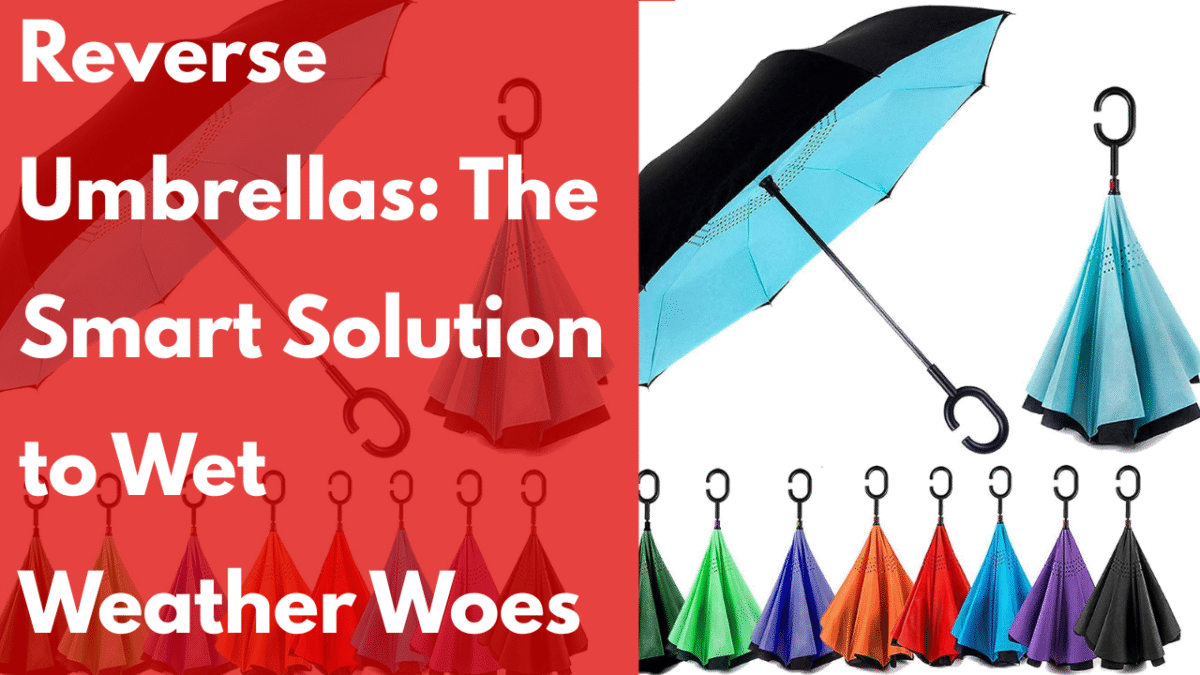
Waterproof Sandals & Grip-Friendly Footwear
Wear waterproof sandals or shoes with a good grip during the monsoon to walk safely on slippery and flooded roads. Regular footwear can make you slip and fall on wet surfaces. These special monsoon shoes help you navigate waterlogged streets and muddy areas without any tension.
Hand Held Device Care
Waterproof Pouches or Zip-Lock Bags: Keep your mobile, important documents, and cash safe from rain and moisture using waterproof pouches or simple zip-lock bags. This cheap and easy method prevents costly damage to your valuables.
Power Banks (Preferably Waterproof): Keep a fully charged power bank ready because power cuts are very common during heavy rains. Having a waterproof power bank helps you stay connected with family and get emergency help when needed.
Home Comfort Items (Indoor Drying Rack, Anti-Moisture Packs)
Indoor Drying Rack / Clothesline: Set up a clothesline or drying rack inside your house to hang wet clothes during continuous rains. This prevents a damp smell and fungus on your clothes when you can’t dry them outside.
Anti-Moisture Packs / Desiccant Sachets: Put these moisture absorber packets in your almirahs, drawers, and where you keep electronics. They soak up extra moisture and prevent your clothes and gadgets from getting spoiled during humid monsoon weather.
Desiccant sachets are small packets filled with moisture-absorbing materials, usually silica gel. They remove water from the air to keep products dry during storage and shipping, preventing damage caused by humidity.
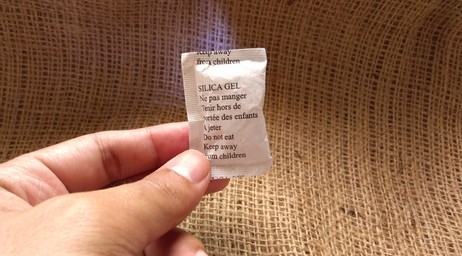
Staying Healthy During Monsoon Season
The rainy season brings relief from heat, but it also brings serious health risks. Monsoons cause a surge in diseases like dengue, malaria, cholera, typhoid, and stomach infections, especially in Northeast states, West Bengal, and major cities like Delhi, Mumbai, and Bangalore. Here’s how to prepare, protect yourself and your family.
Keep a 7-day supply of essential items ready at home. Store enough drinking water for your family for one week. Stock non-perishable food like dal, rice, biscuits, and canned items that don’t spoil quickly. Keep all your family’s regular medications and tablets readily available. Prepare a first-aid box with antiseptic cream, ORS packets for dehydration, and mosquito repellent cream or spray. During heavy rains and floods, shops may close and you might not be able to go out for several days, so having these supplies at home will keep your family safe and healthy.
The National Centre for Vector Borne Diseases Control (NCVBDC) has provided guidelines for disease prevention during the monsoon season. Based on these guidelines, we should take the following actions for better health.
Keep Mosquitoes Away
Mosquitoes breed in stagnant water and spread dangerous diseases like dengue and malaria. Remove all standing water from containers, coolers, and flower pots every week. Don’t let water collect anywhere around your house, including roof gutters, drains, old tires, and holes in the ground. Clean and scrub water storage tanks weekly to prevent mosquito breeding.
Protect yourself from mosquito bites by using repellent cream or spray on your skin. Sleep under mosquito nets, especially the treated kind that kills mosquitoes. Wear full-sleeve shirts and long pants, particularly during evening hours when mosquitoes are most active. Install mesh screens on windows and doors wherever possible. Work together with your neighbours to keep your entire area clean and free from standing water.
Prevent Water related Diseases
Always boil your drinking water or use a reliable water filter before drinking to kill harmful germs. Monsoon brings many water-related diseases like cholera, typhoid, and stomach infections that can make you very sick. Don’t eat raw food or uncovered street food from roadside vendors during the rainy season, as contaminated food is a major cause of illness.
Wash your hands regularly with antibacterial soap, especially before eating meals and after coming from outside. Maintain good hygiene around your home and ensure proper garbage disposal to prevent flies and rodents from spreading diseases.
Why These Steps Matter?
These mosquito-borne and water-related diseases can be very dangerous and sometimes life-threatening. However, following these simple daily habits will effectively protect you and your family from falling ill during the rainy months. Prevention is always better than treatment, so take these precautions seriously to stay safe and healthy throughout the monsoon season.
Safe Travel Tips during the rain in the Monsoon season
Vehicle Maintenance
Check your vehicle’s tires for good grip, make sure brakes work properly, and test that headlights, wipers, and battery are in good condition before the monsoon starts. Keep your vehicle’s insurance papers and RC (registration certificate) in waterproof covers or plastic sleeves so they don’t get damaged by water. During heavy rains, you need your vehicle to work perfectly for safety, and wet or damaged documents can create problems with the police or in case of accidents. A little preparation now can save you from big troubles later.
Keep an emergency kit in your car with snacks like biscuits or dry fruits, drinking water bottles, a torch with extra batteries, jumper cables to start your car if the battery dies, and basic tools like a screwdriver and spanner. During heavy rains, you might get stuck on waterlogged roads for hours, or your car might break down in remote areas. Having these items in your car will help you stay safe and get back on the road quickly. Store everything in a waterproof bag to prevent it from spoiling due to moisture.
Travel Safety
Never drive through flooded roads, even if the water looks shallow. Check live weather updates on the IMD website at mausam.imd.gov.in before going out. Download apps like Mausamgram or Rain Alarm on your phone to get exact weather warnings for your area. If you live in states like Uttar Pradesh, Uttarakhand, or West Bengal, follow red and yellow alerts very seriously and avoid travelling when these warnings are issued. Flooded roads can be much deeper than they look, and your car can get stuck or swept away. It’s better to stay home and wait for the weather to clear than risk your life.
Workplace Safety During Monsoon
Keep Indoor Wiring Safe
Make sure all electrical systems have proper insulation and can resist water. Monsoon humidity raises the risk of short circuits and fires. Check switchboards, wires, and outlets regularly, especially in older buildings and industrial areas.
Protect Electrical Equipment
Cover exposed electrical panels with waterproof cases. Use rubber or plastic coating on outdoor wires to prevent electrocution. Install circuit breakers and ground fault protectors as needed.
Safety for Outdoor Workers
Place non-slip mats at entrances and wet work areas. Give workers bright raincoats, reflective jackets, and waterproof boots for better visibility in the rain. Set up portable shelters or tarps to keep workspaces dry when possible.
Stop Work During Lightning Warnings
Check weather alerts through the Damini Lightning Alert App or local forecasts like alerts by IMD (India Meteorological Department). In high-risk areas like Maharashtra and Odisha, stop all outdoor work immediately when lightning warnings are issued. Teach workers to avoid open areas, metal objects, and lone trees during storms.
Community Support During Monsoon
Share weather updates from IMD or your local government with neighbours so everyone stays alert and prepared for heavy rains.
Insurance Protection
Insurance helps protect your family’s safety and income during weather emergencies. During monsoon season, floods, crop damage, and house leaks are common problems. To stay protected, get insurance for your home and farmland.
Landslide Risks in Hilly Areas
In mountain states like Himachal Pradesh and Sikkim, heavy monsoon rains often loosen soil on slopes. This causes soil erosion (when fertile soil washes away) and sometimes landslides (when mud and rocks slide downhill).
How Trees Prevent Landslides?
Trees protect slopes in three important ways. First, their roots hold soil particles together, creating natural support that keeps hillsides stable. Second, tree leaves act like umbrellas, reducing the force of heavy rain before it hits the ground. Finally, fallen leaves create a protective layer that prevents soil from washing away while keeping healthy moisture levels.
This is why planting trees and protecting forests are essential for keeping hilly communities safe during the monsoon season.
Final Checklist
Store copies of ID, insurance, and medical records in waterproof containers.
Start preparing before the monsoon.
Keep a battery-powered radio for emergency alerts.
Learn your local evacuation routes and shelter locations.
Conclusion
Being prepared saves lives. With heavier-than-usual rainfall expected this year, taking early action will keep your family, home, and workplace safe. Share this information with your community to help everyone stay protected.
Take care.
Frequently Asked Questions (FAQ)
Q1. Why is monsoon preparation important in India?
Monsoon season in India brings heavy rainfall from June to September. While it helps agriculture, it also causes floods, waterlogging, power cuts, and health risks. Good monsoon safety preparation ensures protection of your family, home, and workplace from these challenges.
Q2. How can I get accurate weather forecasts during monsoon?
The India Meteorological Department (IMD) provides reliable updates through the MAUSAM app. You can also use government-approved platforms like the SACHET portal for disaster alerts and the Damini app for lightning warnings. Private weather apps like Skymet and Windy are also helpful for monsoon forecast tracking in India.
Q3. What are the essential items to keep at home for monsoon preparedness?
Some must-have monsoon safety essentials include:
- Clean drinking water (7-day supply)
- Non-perishable food items (rice, dal, biscuits, canned food)
- Medicines and first-aid kit
- Mosquito repellents and nets
- Raincoats, umbrellas, waterproof footwear
- Power banks, inverters, and torches
- Indoor drying racks and anti-moisture packs
Q4. How can I protect my home from rainwater damage?
Follow these home protection tips for rainy season:
- Repair roof cracks and seal leaks before monsoon starts
- Apply waterproof paint or sealants on walls and windows
- Clean drainage systems regularly to prevent flooding
- Keep electronics and valuables on higher shelves
Q5. What health precautions should I take during monsoon season?
To avoid monsoon diseases in India like dengue, malaria, cholera, and typhoid:
- Boil or filter water before drinking
- Avoid street food and uncovered raw food
- Maintain good hand hygiene
- Remove stagnant water weekly to prevent mosquito breeding
- Use repellents, mosquito nets, and wear full-sleeved clothing
Q6. How can I travel safely during heavy rains and floods?
Follow these safe travel tips for monsoon season:
- Never drive through flooded roads
- Check IMD weather alerts before travelling
- Keep your vehicle’s brakes, tires, lights, and wipers in good condition
- Carry an emergency kit with snacks, water, torch, jumper cables, and tools
- Store important vehicle papers in waterproof covers
Q7. What safety tips should workplaces follow during monsoon?
Workplaces should follow monsoon safety guidelines for offices and industries:
- Ensure electrical systems are waterproof and well-insulated
- Cover exposed wiring and install circuit breakers
- Provide workers with raincoats, reflective jackets, and non-slip footwear
- Stop outdoor work immediately when lightning alerts are issued
Q8. How do trees help reduce monsoon-related disasters like landslides?
Trees prevent landslides in hilly regions by:
- Holding soil with their roots
- Reducing the impact of heavy rainfall with their leaves
- Creating a protective layer of fallen leaves that prevents erosion
Q9. Is insurance necessary during the monsoon in India?
Yes. Having monsoon insurance coverage for homes, vehicles, and crops helps protect against financial losses from floods, water damage, and storms. It is especially important for farmers and people in flood-prone states.
Q10. What is the final monsoon preparedness checklist?
- Keep ID, medical records, and insurance in waterproof folders
- Stock emergency food, water, and medicines
- Have a power backup and a radio for weather alerts
- Learn local evacuation routes and shelter points
- Stay updated with IMD and NDMA weather alerts regularly
